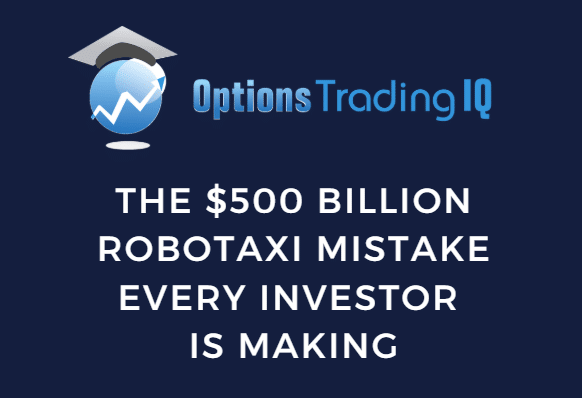
Everyone’s betting on the wrong horse.
While Tesla fanboys obsess over Elon’s latest robotaxi promises, the real money is being made by a company most investors are completely ignoring.
A company that’s already captured 92% of the U.S. robotaxi market while Tesla struggles with basic safety issues.
Here’s what Wall Street doesn’t want you to know about the robotaxi revolution, and the three stocks that will create more millionaires than Bitcoin.
Contents
One robotaxi will replace 10 personal cars. That’s not hyperbole, it’s math.
The average car sits idle 95% of the time.
A robotaxi can operate 20+ hours daily at 65% utilization rates.
This isn’t just disruption, it’s transportation economics turned upside down.
Here’s the kicker: robotaxis eliminate 75% of ride-hailing costs by cutting out drivers.
That’s a $150 billion annual savings opportunity in the U.S. alone.
But here’s what everyone’s missing – the real money isn’t in building robotaxis.
It’s in owning the platform.
Tesla bulls are about to learn a painful lesson.
While Musk promises robotaxis “next year” (for the eighth consecutive year), his Austin rollout is an unmitigated disaster:
- 11 documented safety violations verified by Reuters
- Vehicles dropping passengers in intersections
- NHTSA investigations piling up
- Tesla’s first pedestrian fatality in 2023
Meanwhile, Musk claims Tesla robotaxis will cost “20% of what a Waymo costs.”
But there’s a problem: Tesla’s vision-only approach has never worked at scale.
Every time Tesla removes a safety driver, accidents spike.
The brutal reality?
Tesla might build the cheapest robotaxi, but they’ll never build the safest one.
And in a liability-driven business, safety trumps cost every time.
Waymo dominates with 92% market share for a reason.
They’ve cracked the code:
- 10 million rides completed
- 88% fewer property damage claims than human drivers
- 92% fewer bodily injury claims
- Zero fatal accidents (until January 2025)
- Operating in multiple cities profitably
But here’s the plot twist: Waymo isn’t the best robotaxi investment.
They’re owned by Alphabet, where robotaxis are a rounding error next to Google’s ad revenue.
The real winner? Uber (UBER).
This is the $500 billion mistake everyone’s making: thinking robotaxis are about building cars.
They’re not.
They’re about controlling demand.
Uber already owns the customer relationship.
They have the routing algorithms, the payment systems, the driver network for backup, and most importantly, they have the riders.
When Waymo or Tesla or anyone else builds robotaxis, where do you think they’ll plug in? Uber’s platform.
Uber gets 25-30% of every ride without owning a single vehicle.
It’s the perfect business model:
- No manufacturing risk
- No technology development costs
- No regulatory liability
- Pure margin on every autonomous mile
While Tesla burns billions perfecting sensors, Uber sits back and takes their cut from everyone’s robotaxis.
Position 1: Uber
- Target price: $120 (28% upside)
- Catalyst: Waymo partnership expansion in Q2 2025
- Why it wins: Platform economics, zero manufacturing risk
Position 2: Waymo/Alphabet (GOOGL)
- Target price: $250 (39% upside)
- Catalyst: Insurance cost reductions drive profitability
- Why it wins: Proven technology, safety record, first-mover advantage
Position 3: NVIDIA
- Target price: $200 (25% upside)
- Catalyst: Every robotaxi needs their chips
- Why it wins: Picks and shovels play, inevitable winner regardless of OEM
What to avoid: Tesla.
Too much execution risk, too many safety issues, too much Musk drama.
2025: The Tipping Point Year
- Q2: Waymo expands to 5 new cities
- Q3: Tesla robotaxi safety review results
- Q4: Uber announces major autonomous partnerships
2026-2027: Mass Deployment
- 500,000 robotaxis operating globally
- Cost per mile drops below $0.40
- Traditional ride-hailing becomes obsolete
2028-2030: Game Over
- $450 billion robotaxi market
- Uber captures 30% platform fees
- Early investors retire
Regulatory Risk: One fatal accident could shut down entire markets overnight.
GM’s Cruise learned this the hard way—$9 billion investment, zero return.
Technology Risk: Full autonomy is still unsolved.
Tesla’s approach might never work. Even Waymo struggles in bad weather.
Competition Risk: Chinese companies like Baidu are moving faster and cheaper.
BYD could flood the market with $20,000 robotaxis.
But here’s why I’m still bullish: the economics are too compelling to ignore.
Even if adoption takes twice as long, the returns are generational.
The robotaxi revolution is happening with or without you.
The question isn’t whether autonomous vehicles will transform transportation, they already are.
The question is whether you’ll profit from the biggest mobility disruption since the automobile.
Tesla bulls will learn that building cars is hard.
Waymo will prove that technology leadership doesn’t guarantee investment returns.
But Uber?
Uber will quietly capture the biggest piece of a $500 billion pie.
The window is closing fast.
Every major auto manufacturer is racing to deploy.
Every tech giant is investing billions.
Every ride-hailing company is partnering with autonomous providers.
Don’t be the investor who missed the smartphone revolution because you were betting on BlackBerry.
The robotaxi future is already rolling out on streets from San Francisco to Shenzhen.
The only question is: will you be along for the ride?
Trade safe!
Disclaimer: The information above is for educational purposes only and should not be treated as investment advice. The strategy presented would not be suitable for investors who are not familiar with exchange traded options. Any readers interested in this strategy should do their own research and seek advice from a licensed financial adviser.

